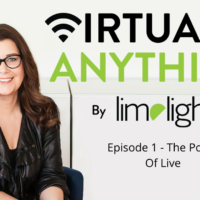Mindful or Mind Full?
By Kimberley King
Being mindful. It’s something that continues to have my curiosity these days. The more I read, the more intrigued I become. The topic of Mindfulness is now starting to come into conversations when clients are discussing employee engagement, stress, work-life balance and mental health. It’s an emerging topic that companies and associations should be paying attention to when designing agendas and PD days. Here’s a quick primer from Mindfulness Expert Beth Wallace that can help you explore and experience just a little taste!
Being mindful is really about paying attention to what’s happening in the present, allowing things to be as they are, letting go and not passing judgement. While simply put into a sentence, why is it that so many individuals struggle with this balance in their everyday lives?
A 2010 Harvard study found that 47% of the time, our mind is lost in thought, bouncing back and forth which prevents us from focus and serenity. We asked Beth Wallace of The Mindful Project for tips to help get started on the journey to a more mindful mindset in the workplace.
“I don’t have time to zone out. I’m too busy. My brain doesn’t work that way.” Sound familiar?
Here are 4 ways you can try mindfulness today:
- Meeting new people. For many of us, our habitual pattern when meeting new people is to focus on our emotions, thoughts, and judgements. Try meeting others with genuine eye contact and allow for natural gaps and space in the conversation. Try spending less time planning what you are going to say while the other person is speaking (always a tough one!) The up-side to being present without a performance can be a richness in connection, a feeling of greater ease, and a more fruitful exchange. Observing, listening, and being present to what the other person has to offer can lead to stronger connections – whether at work or in our personal life.
- Deep Breaths.Explore the value of belly breathing! This practice can have a direct calming affect when in the throes of a tricky situation or emotion. Most of us practice shallow rapid breathing much of the time. We breathe from our upper chest – especially true when we are feeling anxious or rushed. The trouble is, shallow and rapid breathing mimics the reaction we feel when in a ‘fright or flight’ situation. Breathing from our diaphragm can have an almost immediate positive impact on feelings of stress. Interestingly, we were all expert belly breathers as newborns! Babies breathe from the belly from birth. It’s only as we aged that we reverted to shallow breathing. Breathing from our bellies more efficiently transfers oxygen throughout our body. Try it out!
- Knowing a Feeling Will Pass.We all experience the rush and flood of ‘hot’ emotions from time to time. For a few days take an inventory of different emotions as they arise. Within the span of a few days many of us ride a wide pendulum swing of emotion. Feelings may range from boredom, longing, fear, contentment, anxiousness, worry, guilt, sadness, joy, fatigue. And on and on. Some feelings linger longer than others. But unless the result of an acute trauma, most feelings eventually pass.
- Notice your body.This may seems like a silly suggestion. Of course we notice our body – we carry it around all day! However for many of us our body is experienced as separate from our thoughts, emotions, and feelings. Over time I have come to appreciate that there is no break in the connection between body and mind. Try this out by scanning for tightness for a few moments in the morning. As the day goes on, check in again – watch how emotion and thoughts can impact the ebb and flow of our energy and bodily sensations.
Beth Wallace is based in Halifax, NS and has 25+ years of operations and senior management background, primarily in the education and software sectors. Through The Mindful Project, Beth assists leaders to uncover their natural ability for greater clarity, resiliency, and presence in meeting the challenges of leadership. Beth has completed a 12 month Certificate in Mindful Facilitation through the Mindful Awareness Research Center (MARC) at UCLA Semel Neuroscience Institute. Prior to that, Beth was Associate Publisher of Mindful magazine, where she was instrumental in its launch, collaborating with leading researchers and mindfulness teachers across North America.




